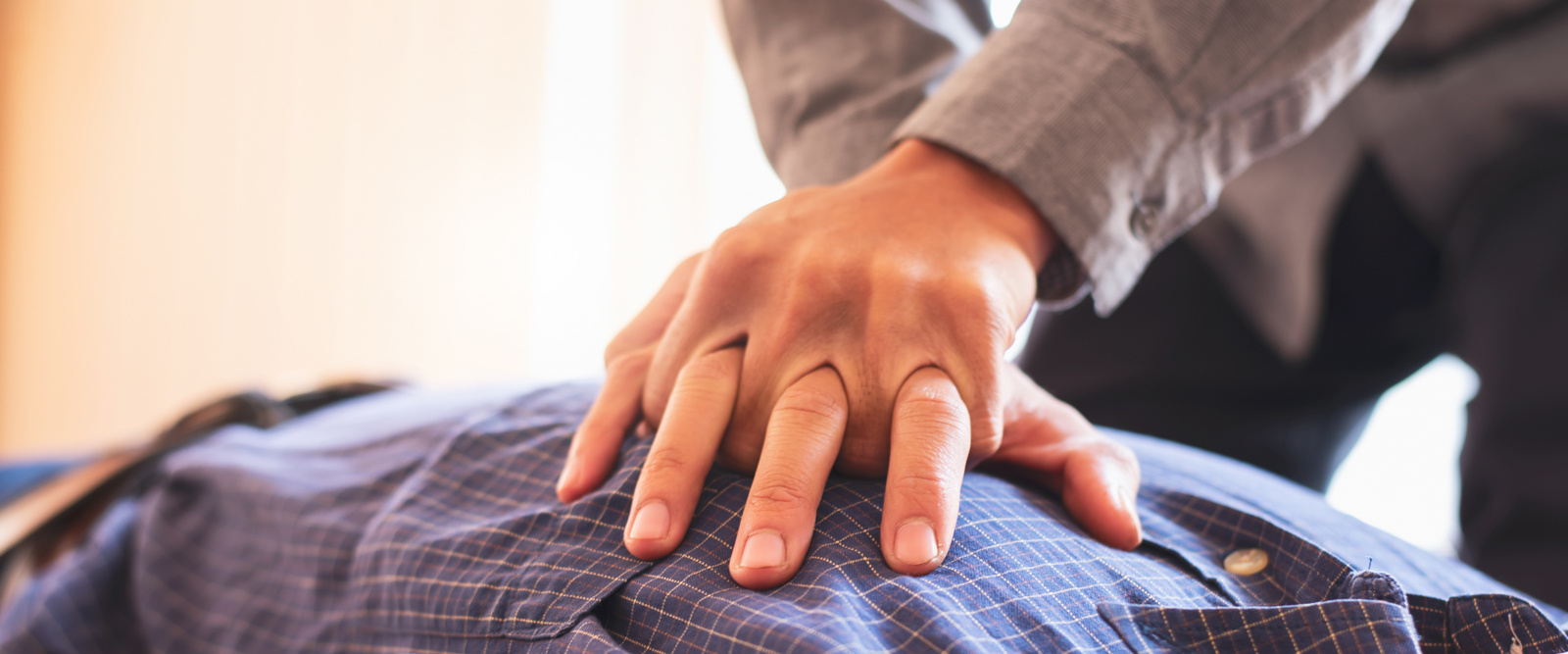Hands-Only CPR: Lifesaving Power in Your Hands
Hands-only CPR can significantly increase a person’s chances of survival from cardiac arrest — and takes less than a minute to learn.

The statistics are sobering. Nine out of 10 people who experience cardiac arrest outside of a hospital do not survive, according to the National Heart, Lung, and Blood Institute. Every minute without cardiopulmonary resuscitation, or CPR, decreases a person’s chances of survival by 10 percent. Within five minutes, brain cells begin to die.
Dr. Holly Andersen, a preventive cardiologist at NewYork-Presbyterian and director of education and outreach at the Ronald O. Perelman Heart Institute, is all too familiar with these numbers. But the condition has also affected her personally. In 2010, her older brother, Scott Andersen, suffered cardiac arrest at home, having just returned from coaching his son’s soccer game. He died at age 50 leaving behind three children.
In an effort to prevent cardiac arrest deaths, Dr. Andersen, who is also a clinical associate professor of medicine in the Division of Cardiology at Weill Cornell Medicine, spearheaded the #HandsOnlyCPR campaign in 2017. Its message: More lives can be saved with hands-only CPR, a technique that takes less than a minute to learn and can double or triple a person’s chances of survival.
“It’s frustrated me my entire career how we lose people to sudden cardiac arrest because people do not know what to do – and what to do is so simple,” she says. “People freeze. Action can save a life. With inaction, people die needlessly.”
Unlike heart attacks, cardiac arrests — which occur when electrical activity to the heart fails, resulting in an almost instantaneous loss of consciousness — generally occur without warning. Immediate intervention is a matter of life or death. The good news is that it takes only three steps to begin saving a life:
- Check to see if the person is breathing, then call 911.
- Lay the victim flat on the ground and kneel beside them.
- With straight arms, interlock your fingers and use the heel of your palm to push down hard and fast in the center of the chest. Make two compressions per second at least two inches deep – think of the song “Staying Alive.”
An easy way to remember these steps:
- CHECK to see if the person is breathing or responsive.
- CALL 911.
- CHEST compressions, hard and fast in the center of the chest.
Effective Hands Only CPR needs to be performed at a rate of 100/120 beats per minute.

Dr. Holly Andersen
Children as young as 4 can start building the skills for responding to a cardiac arrest, according to a recent scientific statement co-authored by the American Heart Association.
The #HandsOnlyCPR campaign came on the heels of a 2015 Institute of Medicine report that called on communities to increase bystander response. Their report found that decreasing the time between cardiac arrest onset and the first chest compressions was critical in increasing the odds of survival. Faster response by bystanders results in higher survival rates and better neurological outcomes.
Since its inception, the City of New York, the New York City Health Department, and the New York chapter of the American Heart Association all joined the campaign, which has since expanded nationally, with several major sports leagues, along with youth sports teams and colleges, amplifying the message.
NewYork-Presbyterian, the Ronald O. Perelman Heart Institute, and Dr. Andersen have created an instructional video in an effort to prevent cardiac arrest deaths.
“My primary goal is to get people who aren’t certified in CPR to act,” says Dr. Andersen. “You don’t have to use mouth-to-mouth. It’s better to do something than nothing.”
“You can save a life,” she says.
By the Numbers
About 350,000 out-of-hospital cardiac arrests occur annually in the United States and only 10% of people survive.
Only about 40% of people who experience cardiac arrest outside a hospital get the immediate help they need before professional help arrives.
Every minute CPR is delayed, a person’s chance of survival decreases by 10%.
Additional Resources
Get more information about cardiac arrest.
Learn about our comprehensive cardiovascular services.
Download a curated playlist, “Songs to do CPR to,” from NewYork-Presbyterian.
